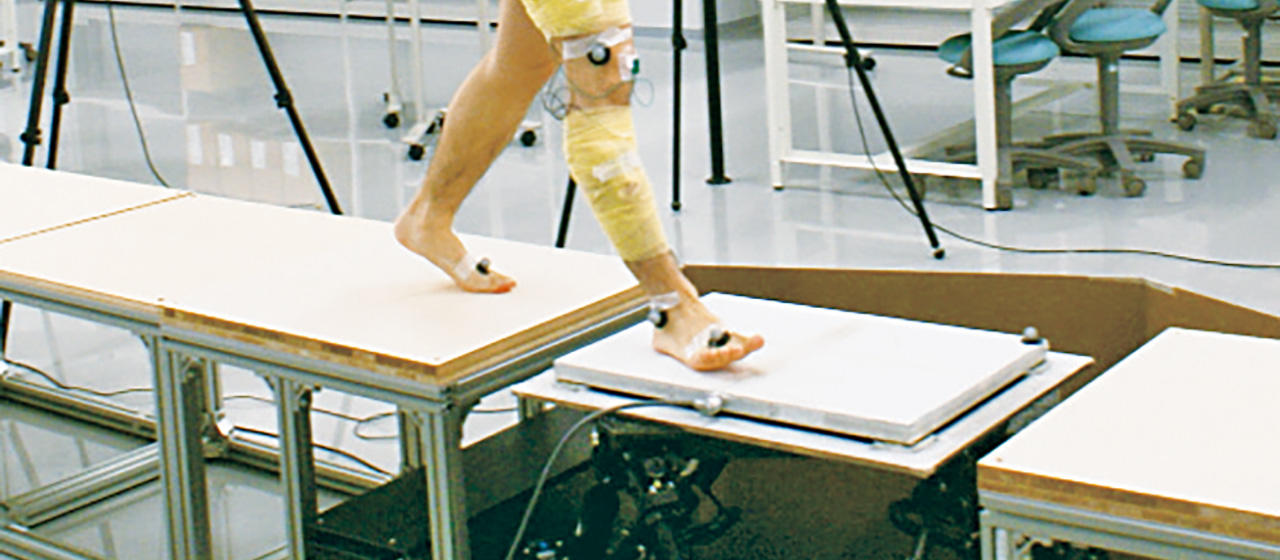
Neuro-Rehabilitation Engineering Laboratory
Elucidating the motion control mechanism of humans and its application in medical welfare
As humans, we tend to not fall easily, as we unconsciously respond to uneven ground and obstacles while walking. This ability can be attributed to the effective functioning of our complicated motion control system, which machines cannot imitate. However, it is difficult for the elderly and handicapped to appropriately use this system and, thus, they are unable to prevent a fall. Our laboratory is currently attempting elucidate how humans’ nervous and muscle systems are controlled, the results of which will be used to develop and evaluate equipment that is used to assist and train the elderly and handicapped.

- Faculty Name
- YAMAMOTO, Shinichirou
- Laboratory location
- No.6 Building OMIYA Campus 1F 6108-1
This lab is for this SDG activity:
STUDY FIELDS
- Life science
- Mechanical engineering
- Medical technology
- Sports and health science
- Medical biotechnology
FOR SOCIETY
It is known that non-weight bearing walking training can change the functions of the neural network in the spinal cord after an injury, improving patients’ autonomous walking. Such training is expected to be conducted in hospitals and rehabilitation facilities in Japan in the near future.
RESEARCH THEMES
- Research on humans’ motion control mechanism.
- Development and evaluation of rehabilitation equipment for the elderly and handicapped.
- Measurement of the bio functions of the muscle and skin.




